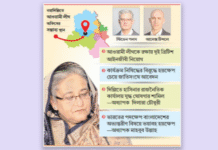Youth unemployment is expected to be a major problem for Bangladesh over the next decade, according to a report released by the World Bank yesterday.
The report titled “Toward Solutions for Youth Employment” released in Washington said the country was simultaneously experiencing a fall in the employment growth rate and a slow uptake in job creation.
The report said the problem of youth unemployment is global, with a third of the world’s 1.8 billion young people not currently involved in employment, education or training.
The report said a further one billion youth will enter the job market in the next decade, but only 40% are expected to be able to get jobs that currently exist.
The World Bank report compared the situation and indicators in four focus countries – Bangladesh, El Salvador, Tunisia and Uganda.
Bangladesh situation
In 2013, about 41% of Bangladeshi youth were considered NEET (not in employment, education or training) and the portion of young unemployed NEETs was 78%, according to the report.
“The absence of quality education and a skilled labour force are the main causes of youth unemployment in Bangladesh,” World Bank Lead Economist Zahid Hussain told the Dhaka Tribune.
The World Bank report found that more than 75% of business leaders claimed that a scarcity of skilled young workers was a challenge to hiring youth.
Because investment to generate employment is not in line with demand, he said the country currently must hire skilled workers from India, Sri Lanka and Thailand because of shortage of skilled labour.
He said Bangladesh’s population under 30 years of age makes up 60% of the total labour force.
An International Labour Organisation study from 2013 estimates that the working-age population will grow annually to more than 2.2 million people over the next 10 years.
In 2013, the youth unemployment rate in Bangladesh was 10.3%, higher than the regional South Asian average of 9.45%, but lower than the world average of 12.4%, the report said.
The World Bank report added that Bangladeshi youth work informally, with more than 95% of youth reporting to work in the informal sector in 2013, of which many are self-employed (31.7%), or in unpaid family work (11.1%).
“Global youth unemployment is a growing global challenge. When young workers are not able to connect to the labour market, it profoundly impacts their ability to participate fully in the economy, and threatens their social and economic future,” said John Irons, managing director of the Rockefeller Foundation.
Joblessness and crime
Mohammad Ashraful Alam, chairman of the criminology and police sciences department of Mawlana Bhashani Science and Technology University, told the Dhaka Tribune that there is a big connection between crime and economics.
“Youth suffering from poverty, unemployment and illiteracy are often driven by frustration towards drugs,” he said, adding that the step to crime is a small one.
If unemployment rises, the crime rate will too, he said.
Ashraf said the state needs to take responsibility for this by creating new jobs and upgrading the education system to include science and technology.
Professor Shah Ehsan Habib of the sociology department at Dhaka University told the Dhaka Tribune that some studies on unemployment found depression to be a major negative impact of unemployment.
He said young people will feel that they do not belong and society may treat them as a burden.
Ehsan said crime will likely follow such a state of affairs, if not among the rich, almost certainly among the middle and working classes.
Ehsan said job creation and stipends may help deal with unemployment.
Gender and unemployment
The report said the gender differential in Bangladesh was striking, with young women constituting the majority of unemployed young NEETs (not in employment, education or training) in Bangladesh.
“More young women than young men are in vulnerable employment. The greatest proportion of women in vulnerable employment can be seen in Bangladesh (90%) while the lowest is observed in El Salvador (35%),” said the report.
It said in Bangladesh, the adult participation rate is 88%, compared with 69% of the youth population.
Eighty percent of young women are at home and not in the labour force. Two-thirds of young women are not in employment education or training (NEET), and two-thirds of school drop outs are women.
Some 36% of urban youth and 42% of rural youth are NEET. Some 25% of young women who are working are employed in agriculture.
The report showed that Bangladesh, Uganda, and El Salvador share the pattern, with agriculture employing the largest share of employed youth.
In Bangladesh, about half (52%) of the youth population works in agriculture and forestry, while in El Salvador, nearly half (45%) of youth were employed in the sector, it said.
The report found that parents may view early marriage as a logical choice for females when fewer income-earning opportunities are open to them.
Births to adolescents are riskier than births to older females. In Bangladesh, for example, girls are the majority of school drop outs, which total 64.4%.
The most common reason for their leaving school is marriage, the findings said.
Source: Dhaka Tribune










